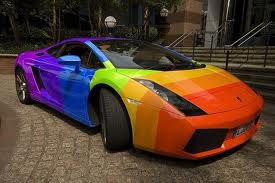Car Colour – Does it Matter?
 In my last blog I discussed the impact of brick colour on heat.
In my last blog I discussed the impact of brick colour on heat.
But what about car colours? What about all of those black or dark blue cars? Are they environmental disasters?
I remember reading an article years ago (if anyone knows the source please pass it on) about how the colour of a car is almost irrelevant because the difference in cooling down once you turn the air-conditioning on is only a couple of minutes.
But I suspect this is someone trying to defend dark coloured cars, much like cigarette companies used to inform us that smoking was not a health hazard. Here’s my logic:
If it takes a couple of extra minutes to cool down then that’s a couple of extra minutes of load on the engine and that means more fuel.
BUT we know that the car is absorbing more heat every moment it is in the sun. So the air-conditioner is working that little bit harder to keep the car cool.
Does anyone actually know how much? Do we have research anywhere on how much extra fuel is consumed by a dark coloured car compared with a light coloured car?
And I mean modern cars with tinted windows. 20 years ago the glass made the car a furnace. Now we have tinting. So now the car colour is important.

